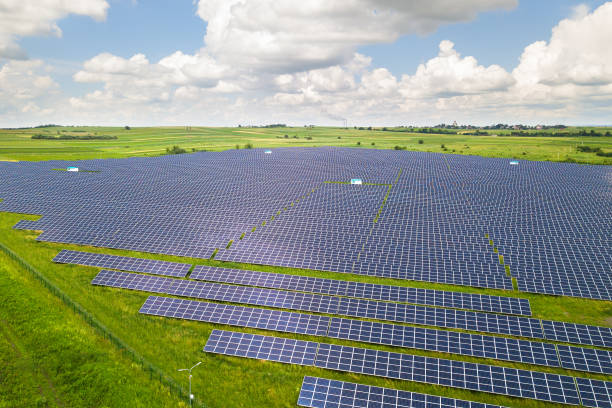As a prestigious Ivy League institution, the University of Pennsylvania (Penn) stands out not just for its academic excellence but also for its significant healthcare operations. With both branches together, they require a staggering 300 megawatts (MW) of electricity, roughly comparable to a third of the energy produced by a mid-sized nuclear power station. Indeed, apart from Columbia University, which uses 100% renewable energy, Penn represents one of the most committed Ivy League institutions to solar power integration.
The Impressive Great Cove Solar Projects
Central Pennsylvania is now home to the state’s most extensive solar venture, hosted by Great Cove solar farms I and II. These green powerhouses span across 1,600 acres in Fulton and Franklin counties. The dual installations come armed with 485,000 solar panels and offer a combined capacity of 220 MW, securing their spot as Pennsylvania’s largest solar project. December 2023 marked the operational launch of these facilities, cementing a new era in renewable energy for the region.
Strategic Partnership for Sustainable Energy
Through a forward-thinking power purchase agreement, signed with Community Energy in 2020 – a company that later joined forces with the AES Corporation – Penn pledged to buy the full energy output generated by both solar farms. This agreement not only ensures Penn’s access to clean electricity but also allows them to earn renewable energy credits. As AES sells the harvested solar energy within the regional market overseen by PJM, Penn reaps additional credits from these transactions, bolstering its sustainability goals.
Achieving complete operational capacity in early 2023, these solar initiatives are propelling Penn towards its ambitious carbon neutrality aim for 2042. J. Larry Jameson, the Interim President, expressed immense pride during a ribbon-cutting during Energy Week. Anne Papageorge, senior vice president of facilities and real estate services, emphasized the vital role of AES’s partnership in Penn’s renewable energy shift and asserted the institution’s leadership in climate action.
From Climate Commitment to Action
Penn’s journey toward environmental stewardship began back in 2007, with a commitment to climate neutrality signed by then-president Amy Gutmann. The University’s Environmental Sustainability Advisory Committee emerged, tasked with strategic recommendations for reducing carbon emissions. The development of Penn’s Climate Action Plans shaped the pathway to the 2042 carbon-neutral pledge. Through rigorous evaluations and selection processes, they chose AES, constructing the solar farms amid global supply chain challenges, yet adhering to the original timeline.
Agricultural Foundations and Educational Prospects
The story of Great Cove solar farms is rooted in its lands’ agricultural past, now repurposed for sustainable energy production while maintaining landowner stewardship. This transition has ushered in new educational perspectives, offering practical learning experiences for students like Hannah Winn, whose research delves into the solar arrays’ environmental impact on soil health.
Inspiring Sustainable Futures
Penn’s solar power initiative demonstrates an exemplary model for educational institutions in embracing sustainability. Beyond contributing to the environment by reducing carbon emissions, the University sets a living example for fostering a just and eco-friendly society, in line with its motto “Leges sine Moribus vanae,” advocating for laws anchored in strong moral foundations.
Conclusively, Penn showcases a viable and inspiring route toward sustainability in higher education, making a convincing argument for others to follow suit.
